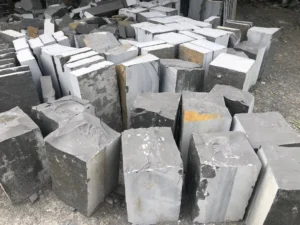Tandur stone advantages and disadvantages
Tandur stone, originating from Tandur, a town in Telangana, India, is a popular natural stone used in construction and flooring. Known for its thermal properties and aesthetic appeal, it is widely used in various architectural projects. Here, we explore the advantages and disadvantages of Tandur stone to understand its suitability for different applications.
Advantages of Tandur Stone
1. Durability and Strength
Tandur stone is highly durable and strong, making it suitable for both residential and commercial flooring. It can withstand heavy foot traffic and is resistant to wear and tear, which contributes to its longevity.
2. Thermal Comfort
One of the significant advantages of Tandur stone is its natural thermal properties. It remains cool in summer and can retain warmth in winter, making it an excellent choice for regions with extreme temperatures.
3. Aesthetic Appeal
Tandur stone comes in various shades such as grey, green, and blue. Its natural texture and color variations add a unique charm and elegance to any space, enhancing the overall aesthetic appeal.
4. Low Maintenance
This stone requires minimal maintenance. Regular sweeping and occasional mopping are sufficient to keep the surface clean. It does not easily stain and retains its look over time.
5. Affordability
Compared to other natural stones like marble or granite, Tandur stone is more affordable, making it a cost-effective flooring option without compromising on quality.
6. Slip-Resistant
The natural surface of Tandur stone offers good slip resistance, which is a critical safety feature, especially in wet areas like bathrooms and kitchens.
Disadvantages of Tandur Stone
1. Porosity
Tandur stone is somewhat porous, which can lead to water absorption and staining. Sealing the stone can mitigate this issue, but it requires regular reapplication of the sealant.
2. Limited Color Range
While the natural colors of Tandur stone are appealing, the range is limited compared to other materials like ceramic or porcelain tiles. This may restrict design options.
3. Cold Underfoot
In colder climates, Tandur stone can feel cold underfoot, which might be uncomfortable without underfloor heating systems.
4. Installation Complexity
The installation of Tandur stone flooring can be more complex and time-consuming than other flooring options. It requires skilled labor to ensure proper fitting and alignment.
5. Susceptible to Acidic Substances
Tandur stone can react to acidic substances, leading to surface etching. Care needs to be taken with substances like vinegar or lemon juice.
6. Weight
Being a natural stone, Tandur stone is heavy, which can be a consideration in buildings where weight is a constraint.
Conclusion
Tandur stone offers a blend of durability, aesthetics, and cost-effectiveness, making it a popular choice for flooring and other architectural applications. However, considerations like its porosity, limited color range, and installation requirements must be taken into account. Ultimately, the choice of using Tandur stone will depend on specific project needs, budget, and climatic conditions. When selected and maintained appropriately, Tandur stone can add significant value and beauty to any construction project.

